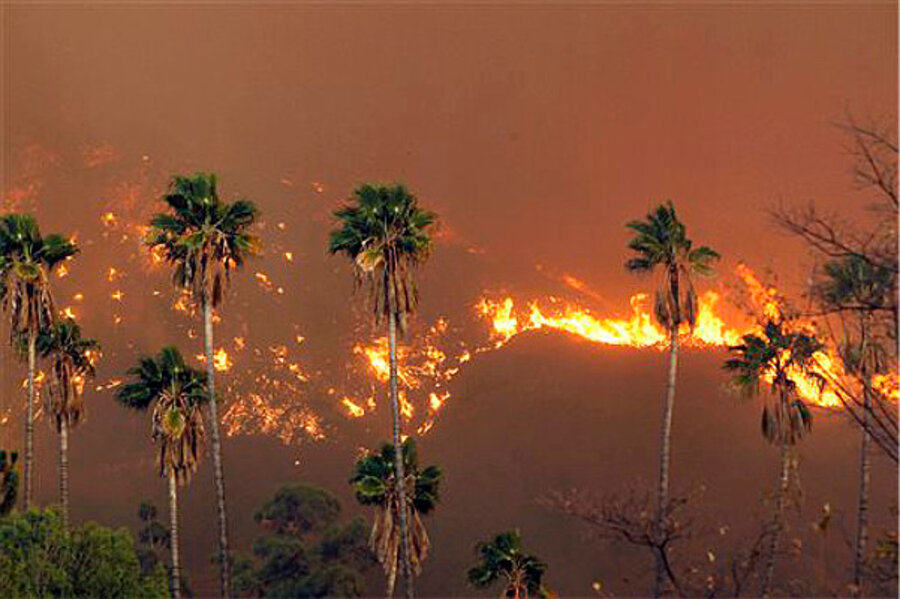Glendora wildfire: Fire halted at LA suburbs as winds die down
Loading...
| GLENDORA, California
Santa Ana winds that fanned a campfire into a wildfire that destroyed five homes and threatened foothill neighborhoods east of Los Angeles relented Thursday afternoon, halting the blaze in its tracks.
The fire swept through 1,700 acres of brush in the San Gabriel Mountains early in the day, but by nightfall it was no longer advancing and was 30 percent contained.
"The weather cooperated quite a bit today. We didn't get the wind ... that we thought," Los Angeles County fire Deputy Chief John Tripp said.
Authorities planned to reopen evacuated Glendora neighborhoods, allowing back some of the 2,000 people ordered to leave the area.
However, fire engines would remain to guard the area overnight, he added.
The National Weather Service said a red-flag warning of extreme fire danger would remain in effect into Friday evening because of low humidity and the chance of winds gusting to 30 mph in the foothills and canyons.
The wildfire, which erupted early Thursday, damaged 17 homes, garages, barns and other buildings, Tripp said.
At least 10 renters were left homeless when the fire destroyed rental units on the historic grounds of a retreat that once was the summer estate of the Singer sewing machine family. Statues of Jesus and Mary stood unharmed near the blackened ruins. The main mansion, which dates to the 1920s, was spared.
Three men in their 20s, including a homeless man, were arrested on suspicion of recklessly starting the blaze by tossing paper into a campfire in the Angeles National Forest, just north of Glendora.
Glendora Chief Tim Staab said the men were trying to keep warm and the wildfire appears to have been an accident.
The men could face either state or federal charges, depending on whether the campfire was on federal forest land, he added.
The Angeles National Forest was under "very high" fire danger restrictions, which bar campfires anywhere except in fire rings in designated campgrounds.
There are no designated campgrounds in the area where the fire began, US Forest Service spokeswoman L'Tanga Watson said.
The mountains rise thousands of feet above dense subdivisions crammed up against the scenic foothills. Large, expensive homes stand atop brush-choked canyons that offer sweeping views of the suburbs east of Los Angeles.
Whipped by Santa Ana winds, the fire quickly spread into neighborhoods where residents were awakened before dawn and ordered to leave.
The last catastrophic fire in the San Gabriel Mountains broke out in 2009 and burned for months, blackening 250 square miles, killing two firefighters, and destroying more than 200 structures, including 89 homes.
The flames could have abundant fuel to consume. Vegetation above Glendora had not burned since a 1968 fire that was followed by disastrous flooding in 1969.
The smoke was visible from space in satellite photos. The South Coast Air Quality Management District issued a smoke advisory and urged residents to avoid unnecessary outdoor activities in directly affected areas.
The Santa Anas typically begin in the fall and last through winter into spring. The winds also raise temperatures to summer-like levels. Many areas have enjoyed temperatures well into the 80s.
Associated Press writers Christopher Weber, Sue Manning, Alex Veiga and Tami Abdollah in Los Angeles contributed to this report.







